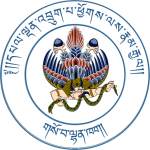About Us-DOPH
Background
1964
Directorate of Health Services established under the Development Wing
1994
Changed to Department of Health under the Ministry of Health & Education
2003
Department of Public Health created under the Ministry of Health
Transparency is our strength
The Department of Public Health is structured into three divisions where these divisions work collaboratively to manage and implement programs, ensuring a healthier and informed community.
Our Mandates
- Public health policies and standards: Formulate evidence-based policies, guidelines and standards for public health
- Disease prevention and control: Safeguard public health by effectively preventing and controlling communicable and non-communicable diseases
- Health promotion and education: Empower individuals and communities for disease prevention, health promotion, behavioral change and wellbeing
- Evidence-based policy and practice: Conduct public health studies/survey and disseminate findings to inform policy and practice
- Emergency preparedness and response: Coordinate with stakeholders to prepare for and respond to natural disasters, pandemics, and other health emergencies
- Monitoring and evaluation: Monitor and evaluate the implementation of public health programmes
- Technical assistance and resources: Provide technical support to healthcare workers and stakeholders in the provision of public health services
Mandates of the Divisions
Communicable Disease Division (CDD)
- Prevent, control, and sustain elimination and eradication status of the communicable diseases.
a) Formulate and implement strategies, policies and guidelines for preventing and controlling communicable diseases.
b) Provide uninterrupted supply of vaccines maintaining cold chain system.
c) Conduct health screenings, contact tracing, joint investigation, case management. - Establish disease surveillance system for early detection and response.
a) Prevention, early detection, data sharing, control, and containment of disease outbreaks.
b) Coordinate with governmental and non-governmental organizations, international agencies, and local communities. - Provide stewardship to enhance preparedness and response to public health emergencies.
a) Ensure a coordinated approach to prevent, detect, and respond to potential public health threats.
b) Adopt whole-of-government, one health and all-hazard approach for managing public health emergencies.
Non-Communicable Disease Division (NCDD)
- Design and execute interventions for addressing NCDs
a) Screening, health education campaigns, healthy lifestyle promotion, and early detection programmes for cardiovascular diseases, diabetes, hypertension, and chronic respiratory illnesses. - Implement comprehensive cancer prevention and control initiatives.
a) Focus on prevention, early detection and treatment of various types of cancers. - Improve health and well-being throughout the life course.
a) Continuum of care approach for newborns, children, adolescents, mothers and elderly.
b) Comprehensive program addressing various aspects of well-being to cultivate healthy habits.
c) Provide comprehensive healthcare services to elderly people.
d) Ensure conducive environment for health outcome including occupational related hazards. - Enhance quality of life for individuals with disabilities
a) Early intervention, health promotion, and addressing risk factors to prevent onset or progression of conditions leading to disabilities. - Improve population-wide nutritional health.
a) Provide access to balanced nutrition, prevent malnutrition, address dietary needs, and promote overall well-being through diverse interventions and education.
Health Promotion and Risk Communication Division (HPRCD)
- Develop and implement community health promotion initiatives.
a) Design and create evidence-based health promotion materials.
b) Inform and educate communities about public health and social issues.
c) Empower individuals to make informed decisions about their health and well-being. - Foster collaboration and community engagement.
a) Establish partnerships across sectors for comprehensive solutions to public health challenges.
b) Explore resources and expertise for health education and campaigns.
3. Timely dissemination of health IEC through various communication channels.
a) Communicate health risks, safety measures, and public health initiatives through various media and medium.
b) Ensure validity and reliability of health-related information including rumour management.
Address
- Ministry of Health
- Kawang Jangsa
- Thimphu, Bhutan
- Post Box : 726
- info@health.gov.bt

